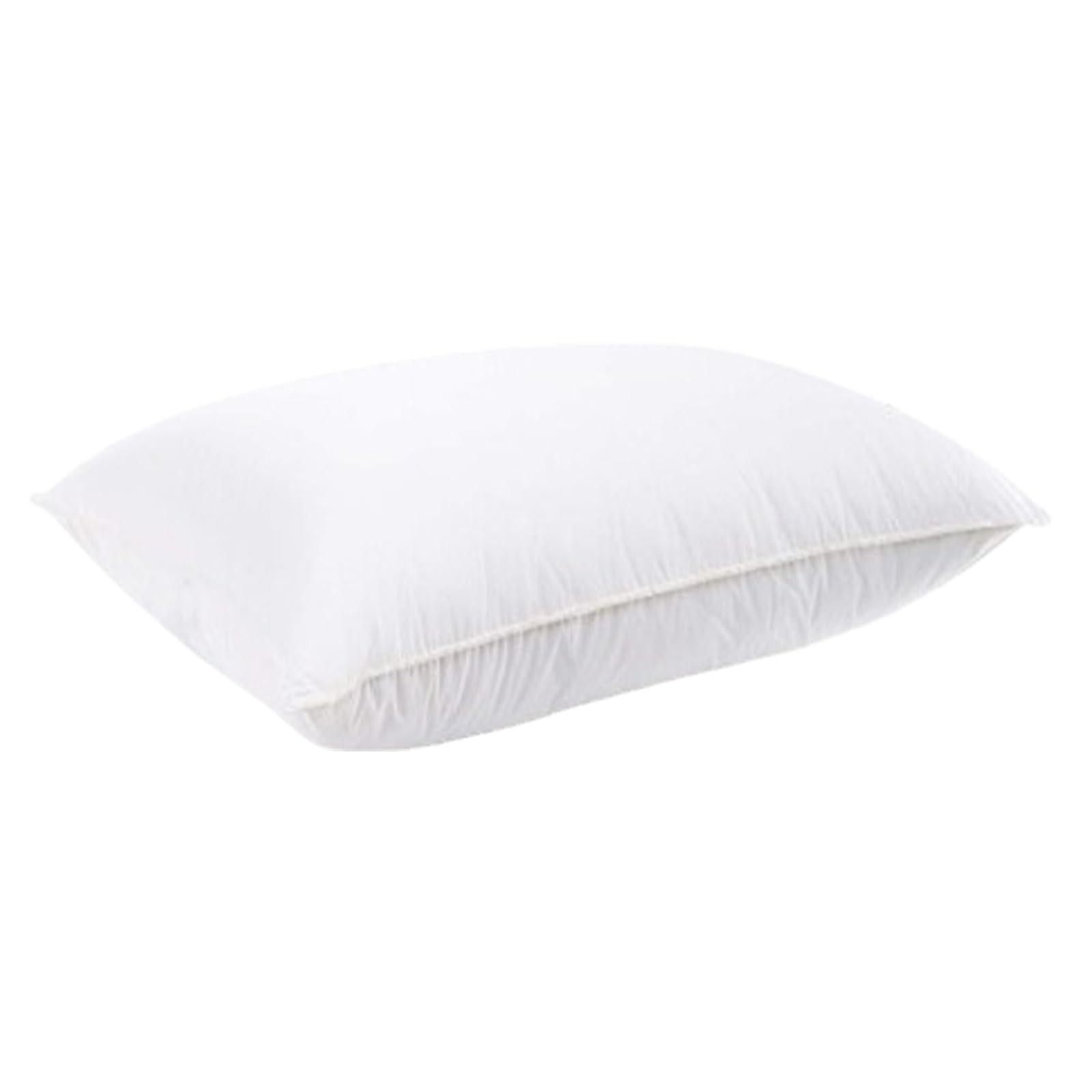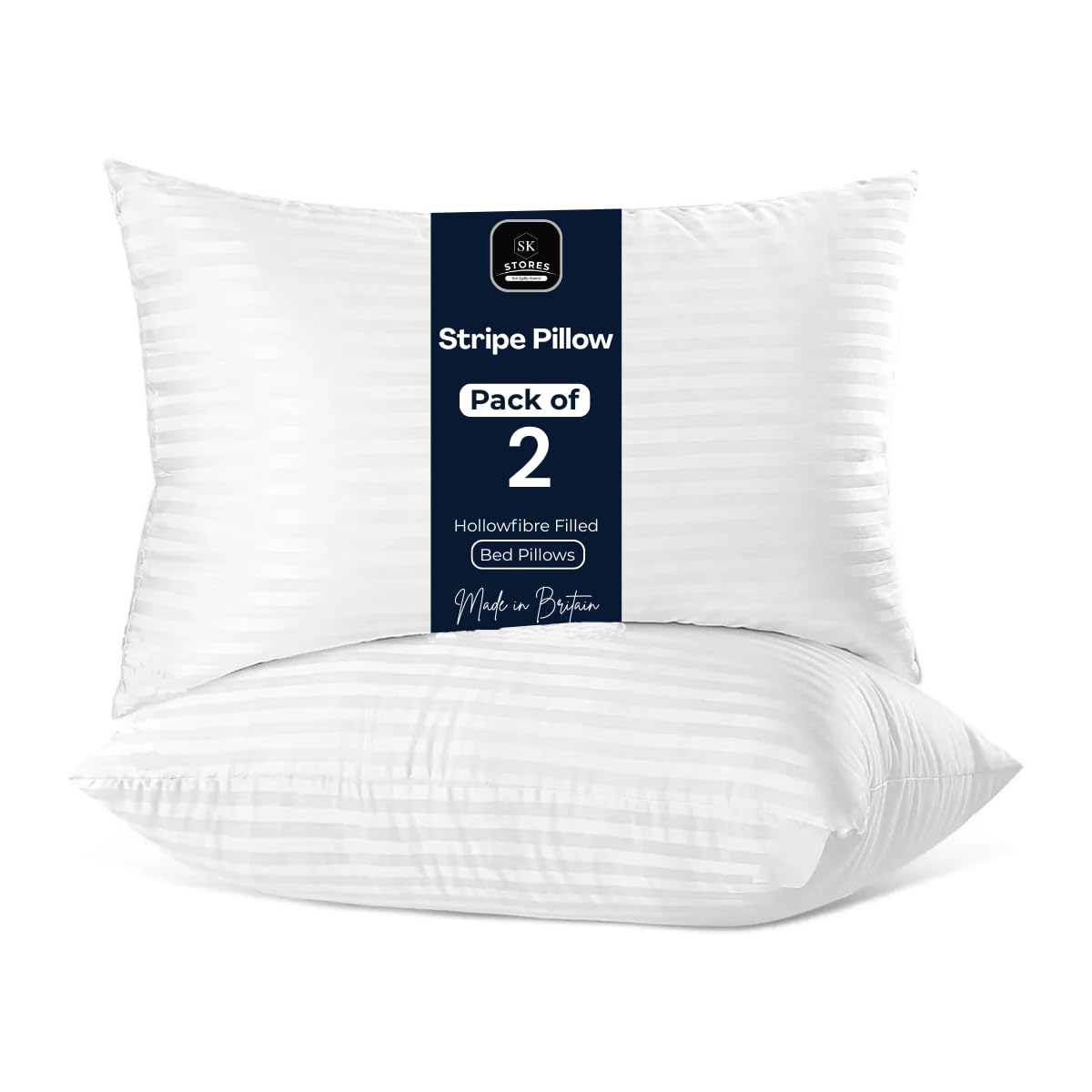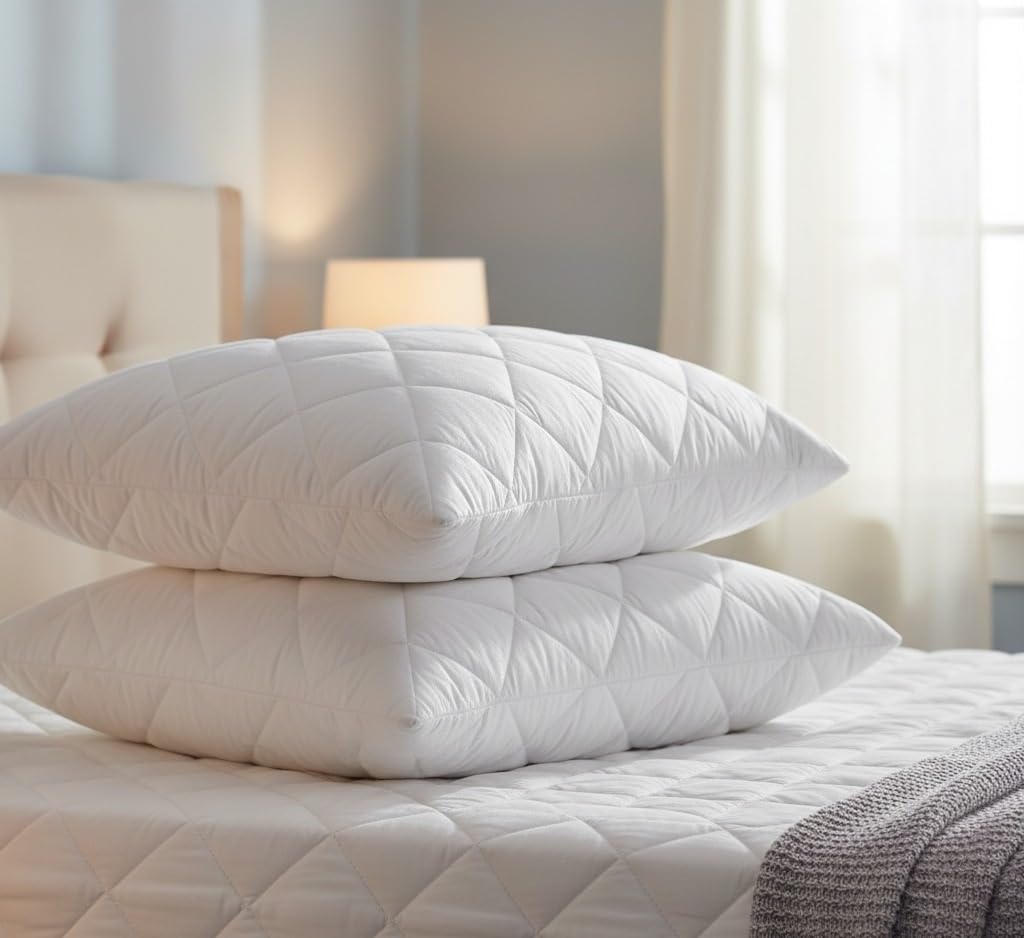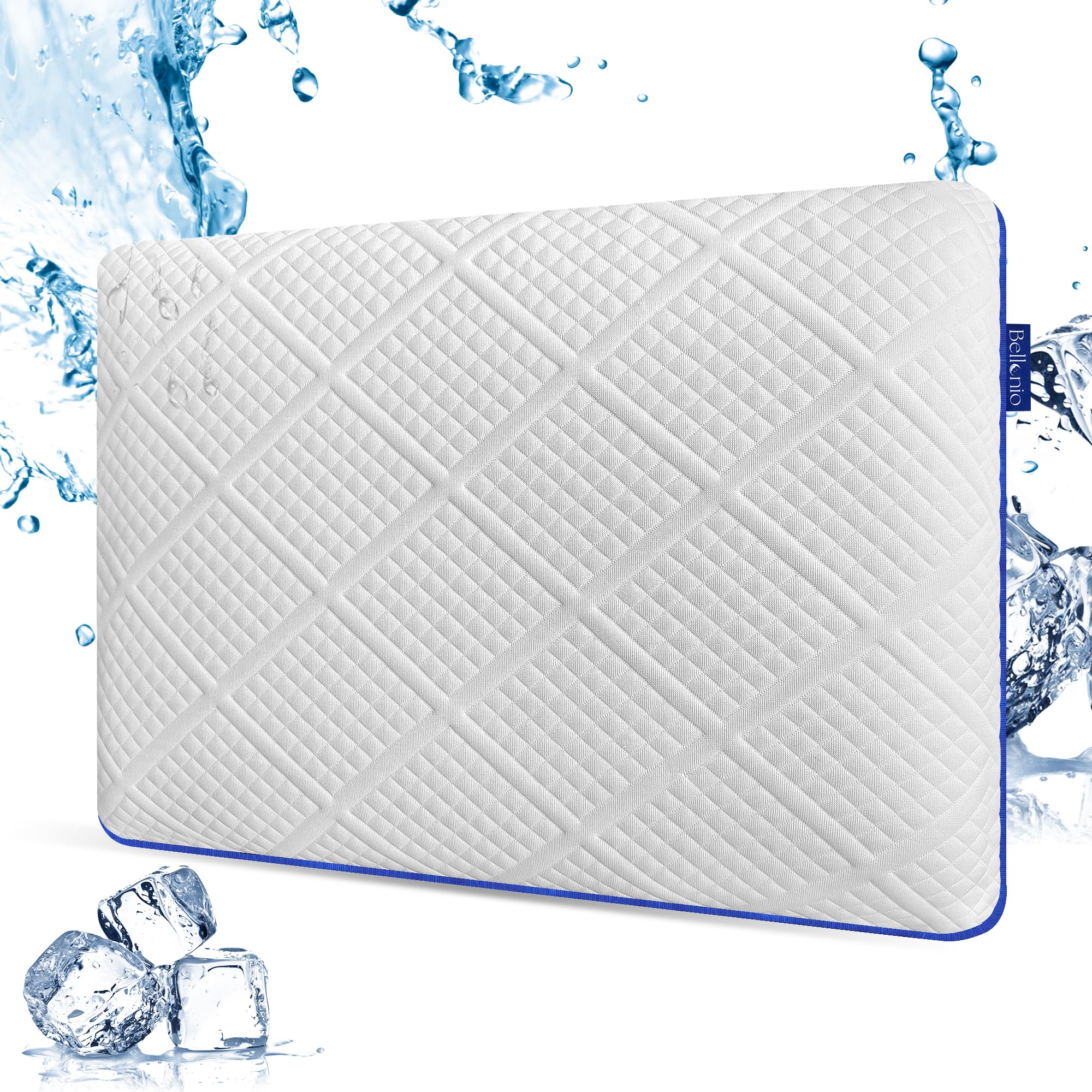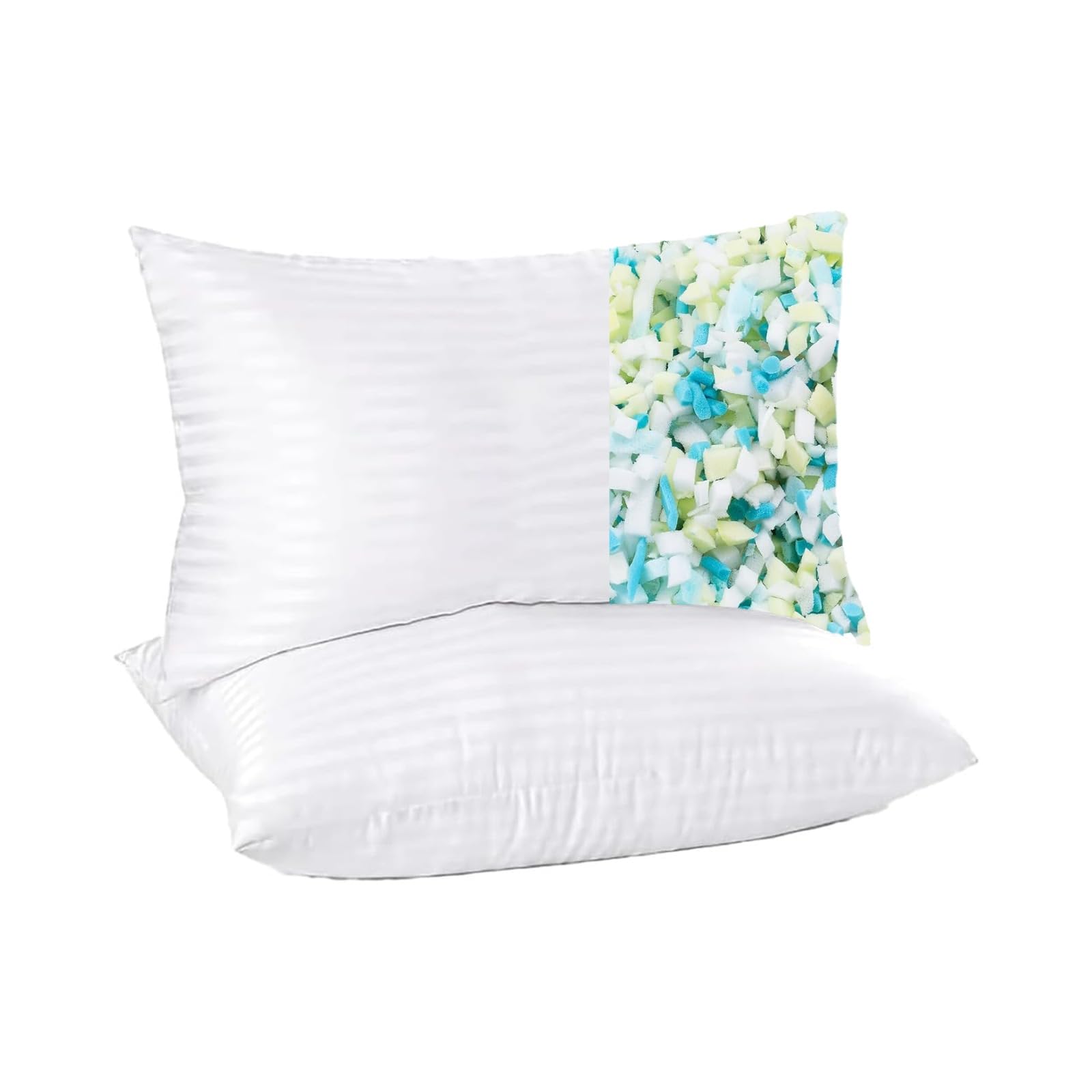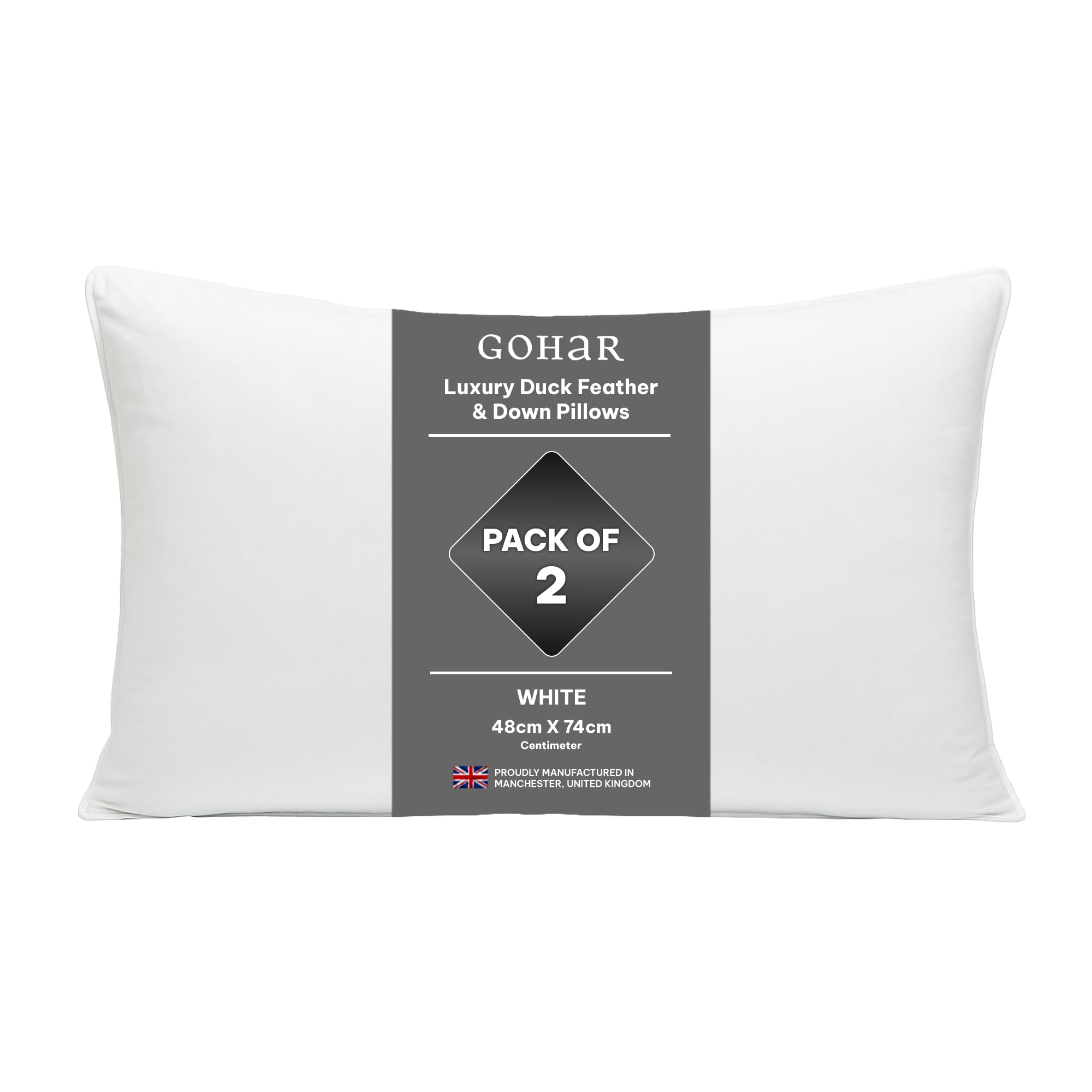Cooling pillows promise chilled sleep and sweat free nights, yet many fall short once you put a pillowcase on and lie on them for a few hours. Real comfort comes from height, support, airflow, and fabric feel, not only a cool first touch. This UK guide separates myths from useful features so you can buy a pillow that stays comfortable through the night rather than one that only feels cool for a minute.
Neck comfort starts with pillows matched to sleep position and consistent loft.
Myth: gel layers keep you cool all night
Gel pads and coatings feel cool at first touch because they conduct heat away quickly. Once they reach skin temperature, the effect fades. Under a cotton pillowcase, the initial cool sensation is even shorter. If you run warm, focus on breathable foams, perforations, and low heat build up rather than a thin gel sheet that warms to your skin in minutes.
Myth: any memory foam sleeps hot
Dense, closed cell foams can trap heat, but not all memory foams are equal. Open cell foams with channels, cut profiles, or shredded foam fills allow more airflow. A breathable cover and a crisp cotton pillowcase make a bigger difference than a marketing claim alone. Latex is another option. It springs back faster and often feels cooler at the same loft because air moves through it more easily.
Myth: phase change fabrics solve heat
Phase change materials absorb heat for a limited time as they change state. The cooling effect is temporary and works best when paired with airflow. A well ventilated foam and a light, breathable cover keep temperatures steadier than a coating that cools briefly then stops.
What actually helps hot sleepers
Airflow and moisture management are the foundation. Look for perforations, cut channels, or shredded fills that allow air to move. Choose covers made from light knits or smooth cotton that wick and dry quickly. Pair with a crisp cotton pillowcase and keep bedroom humidity in the middle range so sweat evaporates. Pillow height matters too. A very high pillow reduces air around the face. The right loft can feel cooler simply because your head sits in a more open space.
Night routine and whole bed setup
Cooling comes from the whole system. Use percale cotton sheets and a duvet tog that suits the season. Ventilate the room in the evening or use a fan for gentle airflow. If you use an electric blanket to pre heat the bed, turn it off before sleep so foam does not start warm. These small steps help a breathable pillow do its job.
Choosing a cooling pillow by sleep position
Side sleepers often need more loft and should look for ventilated memory foam or latex with perforations so heat can escape. Back sleepers can use medium loft and benefit from a breathable knit cover that does not trap heat under the neck. Stomach sleepers need very low loft and a soft, shallow pillow so air reaches the face. Adjustable shredded foam pillows let you remove fill for summer and add some back in for winter.
Care that keeps pillows fresh
Wash removable covers regularly. Air foam pillows on a dry day away from direct sun. Use light, breathable protectors so sweat does not soak into the core. Replace pillows that smell musty even after airing or that feel warm and damp in the night. Fresh materials perform better.
We shortlist ventilated foams, latex, and adjustable designs that stay comfortable in UK bedrooms in our guide to cooler pillows. For the rest of the bed, see percale sheets and a season appropriate duvet.
FAQs
Do cooling gels work?
They feel cool at first and then warm to your skin. Airflow and breathable covers keep temperatures steadier through the night.
Is latex cooler than memory foam?
Often, because air moves more easily through latex. Ventilated memory foams with channels can also work well.
What pillowcase is best for hot sleepers?
Cotton percale or a smooth, light lyocell case. Avoid heavy knits that trap heat and moisture.
Breathable designs and adjustable lofts feature in pillows that stay comfortable at night. Cooler beds usually pair with percale sheets and an appropriate seasonal duvet.
